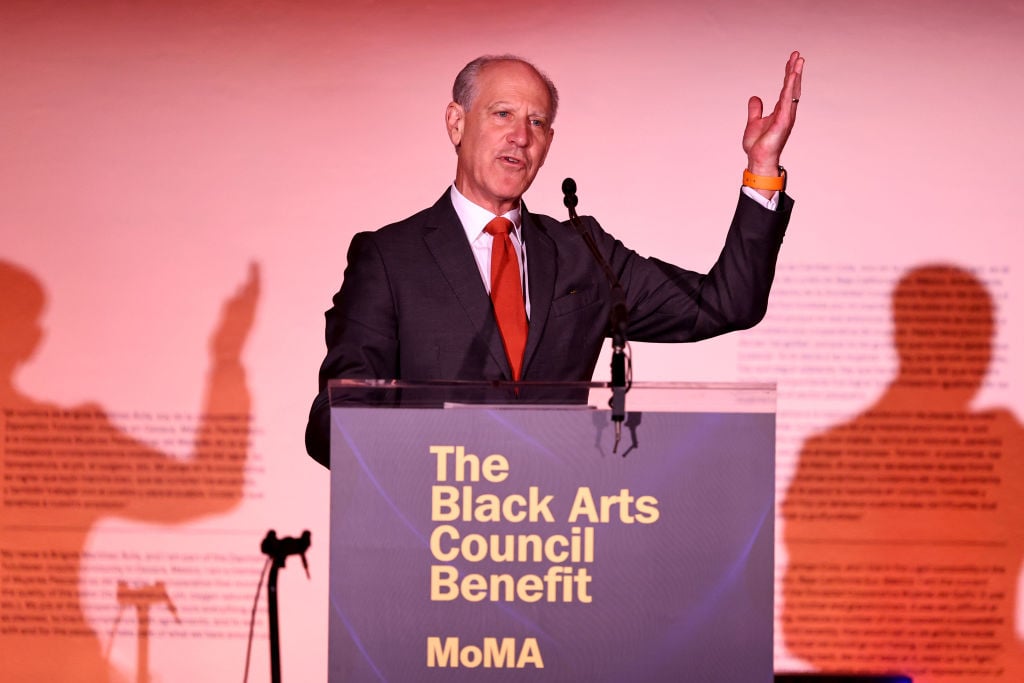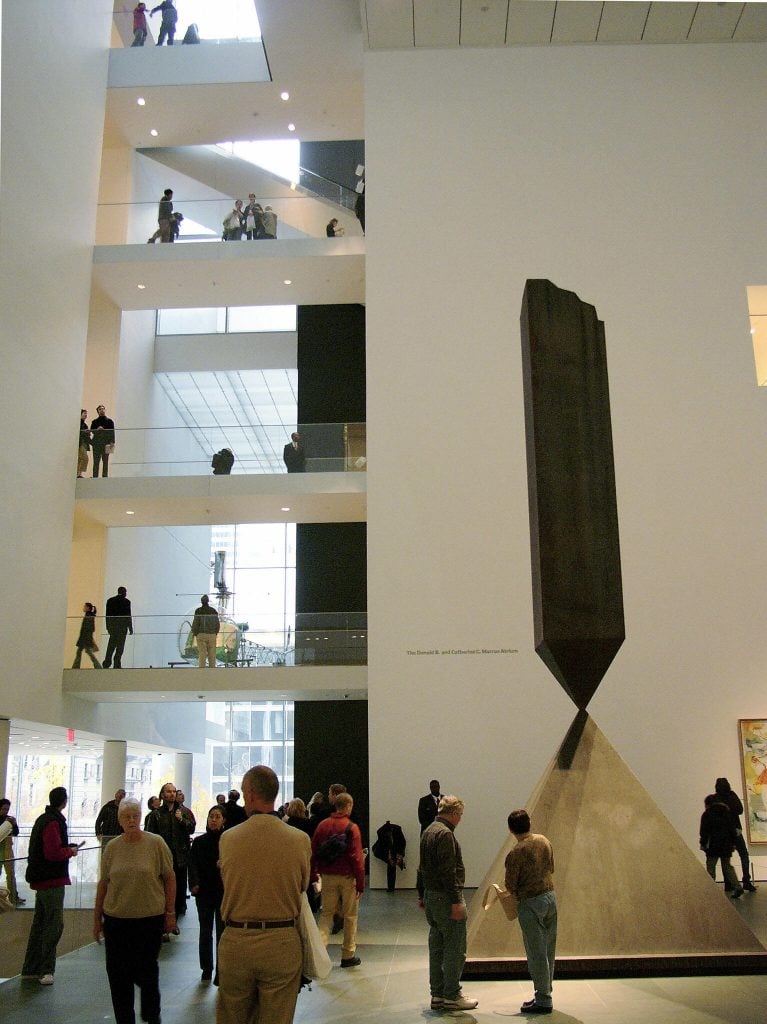Museums & Institutions
MoMA Chief Glenn Lowry Is Departing After 30 Years. Who Will Succeed Him?
Thelma Golden, Melissa Chiu, and Franklin Sirmans are all seen as leading contenders.

Thelma Golden, Melissa Chiu, and Franklin Sirmans are all seen as leading contenders.

Katya Kazakina

Glenn Lowry, the longtime director of the Museum of Modern Art in New York, will step down next year, the museum said today. The big question now: Who will step into one of the art world’s most coveted roles?
Lowry, a specialist in Islamic art, took over MoMA, one of the most prestigious museums in the world, in 1995, after a five-year stint as the director of the Art Gallery of Ontario in Toronto. His three-decade MoMA reign, the longest directorship in its history, has been characterized by the significant expansion of its galleries and endowment.
Lowry, 69, will stay on through September 2025, he told the New York Times, which first reported the news.
“It’s the right moment to think about the future of the museum and I just thought, carpe diem,” Lowry said in an interview with reporter Robin Pogrebin. “All the things I set out to do 30 years ago are either accomplished or in play in a very positive way.”
Lowry’s departure comes at the time when the museum field is confronting issues of diversity among its leaders, boards, staff, and holdings. Under Lowry, MoMA has actively acquired and exhibited works by artists of various backgrounds, and its Contemporary and Modern Art Perspectives (C-MAP) program has pursued research on Africa, Asia, and Central and Eastern Europe.
The departing director has been an outspoken advocate for change in the museum field, championing radical views on deaccessioning (to allow museums to sell art to raise funds for programming and collection management), often urging colleagues to embrace pragmatism.
Lowry oversaw MoMA’s merger with the P.S. 1 Center for Contemporary Art in Long Island City, Queens, in 2000, giving his institution a venue for more experimental and untested art. This was followed by an expansion of the museum’s original home on West 53rd Street in Manhattan in 2004 and another in 2019, adding 40,000 square feet and 47,000 square feet of exhibition space, respectively.
Under Lowry’s leadership, the museum’s endowment has grown from about $200 million in 1995 to $1.7 billion today, according to a MoMA spokesperson.

Barnett Newman’s Broken Obelisk (1963–69) in the main atrium of the Museum of Modern Art in 2004, after a major renovation by Yoshio Taniguchi. Photo by Mandel Ngan/AFP via Getty Images
Some of Lowry’s critics have argued that he replaced founding director Alfred Barr’s vision of the institution as “a torpedo moving through time” into one of it as a battleship—big, corporate, and hard to turn.
Lowry’s tenure saw the decline of an internal structure defined by famously territorial department heads in favor of collaboration across mediums; Kirk Varnedoe and Robert Storr departed as chief curators for paintings and sculpture.
Lowry’s post-MoMA plans include giving a series of lectures at the Louvre in Paris next fall, according to the Times.
One prominent New York art dealer said that it’s easy to imagine Lowry joining a mega gallery like Gagosian as a consultant. (There is some precedent: After a three-year stint leading MoMA PS1, Kate Fowle joined Hauser and Wirth in 2023, and John Elderfield, another MoMA paintings chief, has worked for Gagosian.)
Lowry’s affiliation with billionaire Alice Walton’s Art Bridges Foundation in Bentonville, Arkansas, on whose board he sits, may provide another clue to his future plans. (A quick sidebar: Lowry is an avid cyclist, and Bentonville is gaining a reputation as a major mountain-biking capital.)
Who will succeed Lowry, becoming the seventh director in the nearly 100-year history of MoMA, has been a topic of intense speculation for years. The art world has long speculated that it could be Thelma Golden, the influential director of Studio Museum in Harlem, which will soon complete its own major expansion project—a milestone that directors often pick as a time to exit. (Lowry and Golden worked together on a fellowship program at MoMA.)
Other museum leaders seen to be in the running include Franklin Sirmans, the director of the Pérez Art Museum Miami in Miami; Melissa Chiu, of the Hirshhorn Museum and Sculpture Garden in Washington, D.C.; Michael Govan, of the Los Angeles County Museum of Art; Madeleine Grynsztejn, of the Museum of Contemporary Art, Chicago; James Rondeau, of the Art Institute of Chicago; and Adam Levine, of the Toledo Museum of Art in Ohio.
One way to think about who will get the nod is to consider the attributes that MoMA’s board will be looking for, museum experts said. Search committees often hunt for the exact opposite of an outgoing director. Key factors include the person’s ability to lead and fundraise, their experience in major markets, and their chemistry with the board. The person’s point in their career trajectory is also important, as a younger generation of leaders comes into its own.
Two other major New York museums have picked Europeans to lead them: the Met went with Vienna-born Max Hollein in 2018, and, this year, the Guggenheim selected Mariët Westermann, who is Dutch.
The MoMA board said that it will engage a professional firm in its hunt for a new director. Its search committee, which will likely comprise influential board members, will be looking for someone who can generate excitement while safeguarding its sense of stability and power, a former museum director said.
“The assignment is not ‘How do we change?’ ” the former director said. “It’s about: ‘How do we preserve?’ ”